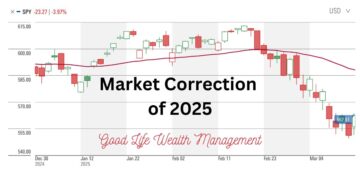We began 2015 with the following the following observations about the equity markets: US stocks were fully valued and ripe for a possible correction. Small cap stocks were trading at a premium to large cap and should not be overweighted. European equities were cheaper than US stocks, while their economic recovery continued to lag the US recovery. Emerging markets equities were trading at a significant discount to developed markets, which was related to declining commodity prices.
12 months later, as we near the close of 2015, all of these factors remain in place, and at an even more exaggerated level than at the beginning of the year.
US large cap stocks did finally have a correction of 10% at the end of August. While the fear was that this correction would become the start of a bear market, instead, markets snapped back smartly and erased those losses by early October. That’s the good news. The bad news is that we have failed to make new highs in Q4 and the market seems to be range bound, trading around the same levels that frustrated investors in the first half of the year.
Looking forward to 2016, earnings for the S&P 500 Index are expected to be under pressure from two factors. First, the remarkable collapse in oil prices has decimated earnings in the energy sector. Second, the strong dollar is a headwind to multi-national companies who either export US goods overseas (which are now quite expensive to foreign consumers), and earnings of foreign subsidiaries appear smaller, when translated back into US dollars. As a result, earnings for the S&P 500 could actually show negative growth this quarter and may show little growth for all of 2016. And if there’s no growth, the current price to earnings ratio of 18.5 seems difficult to justify.
For US Small Cap stocks, years of strong performance pushed valuations to high levels. While large caps sport a PE ratio of 18.5, the small cap Russell 2000 Index has an even more bloated valuation of 20.8.
Foreign developed stocks greatly lagged US stocks in 2014, when they were down 5% versus a gain of 13% for their US counterparts. For 2015, both US and Foreign stocks are almost flat on the year. Looking forward, the important difference is valuation. While US stocks have a PE of 18.5, foreign stocks are cheaper, with a PE of 16. International stocks have much better valuations across the board, including price/book, price/sales, and dividend yield.
While the US recovery seems to have been in place for several years, the fact that Europe’s recovery has been delayed gives some hope that their stocks also have some catching up to do.
Emerging Markets have had a dismal 2015, down 16% year to date. In sprite of the carnage, valuations are very cheap, and demographics are favorable for long-term growth. While GDP growth in the US, Europe, and Japan risks being crowded out by government debt and retiree costs, Emerging Market economies remarkably have lower debt levels and a better balance sheet.
EM is being held back in part by low commodity prices, which are the largest source of trade revenue for many countries. As a contrarian, if you compare the past 5 years of performance in EM versus US stocks, and look at current valuations, you have to believe that these divergent results are going to inevitably reach an inflection point. Will that occur in 2016? No one knows, but we will maintain our holdings in EM and wait for a reversion to the mean.
I’ve been bearish on Commodities for several years. At my previous firm, we did hold a multi-million dollar piece of commodities within our equity allocation. In 2013, I suggested we exit the space, which we did, sparing our investors from substantial losses. Now with oil futures trading at $35/barrel, I’m starting to wonder how much lower can they go? Will we breach the $32/barrel price we saw in 2009, at the depths of the global recession? Production is being shuttered across commodity producers around the globe, and yet short-term supplies remain high.
I don’t know when commodity prices will stop falling, but I have to believe we are closer to the 8th or 9th inning of this decline and not somewhere in the middle. At some point, it will make sense for investors to have a small piece of commodities, as it offers a possible inflation hedge, and can be uncorrelated to both equities and fixed income, where we face rising risks.
We will be making small changes to our model portfolios in January to reflect the current state of fixed income and equity markets. While we are somewhat tactical in our approach, we don’t want to give the impression that these trades are the primary source of investment performance. Ultimately, the most important part of investing is staying diversified, keeping costs down, and rebalancing periodically.
Source of data: Morningstar as of 12/20/2015







